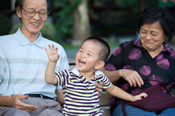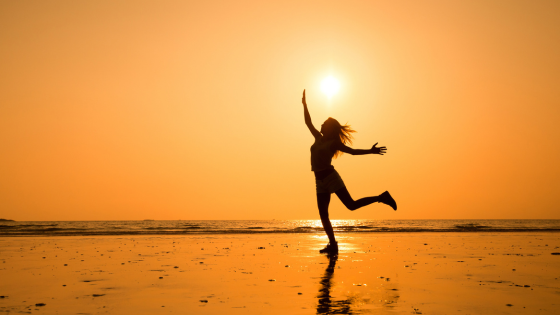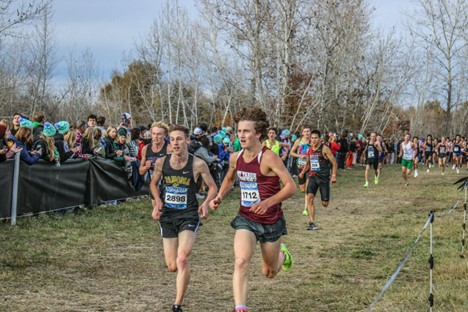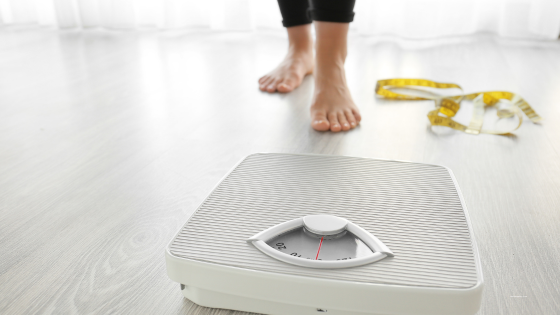 Not too long ago I found myself paired on the golf course with a ninety year-old gentleman, as we progressed through the common golfing introductions it turns out that he had been playing golf since he was seventeen years old! Further into our introductions, he told me that he was not going to let age keep him from doing what he enjoyed. As we approached the first tee box in our carts, he informed me that I was more than welcome to play through otherwise it might be the slowest round of golf I would ever play. However, he did make sure I knew that I was more than welcome to join him and his “young friend”.
Not too long ago I found myself paired on the golf course with a ninety year-old gentleman, as we progressed through the common golfing introductions it turns out that he had been playing golf since he was seventeen years old! Further into our introductions, he told me that he was not going to let age keep him from doing what he enjoyed. As we approached the first tee box in our carts, he informed me that I was more than welcome to play through otherwise it might be the slowest round of golf I would ever play. However, he did make sure I knew that I was more than welcome to join him and his “young friend”.
The “young friend” that was playing along with this senior gentleman was in his mid-50s. About ten weeks earlier, while talking at church, these two decided that they would play golf every Friday afternoon; so far they had held to their goal. The younger man had only recently begun to play golf, so each week he would get informal lessons as they played holes together. As we were completing the first hole it became obvious to me that these two had developed a wonderful relationship while on the course. Two hours later, after finishing the first nine holes, I was glad that I had declined the offer to play through.
It never ceases to amaze me how seniors who are active, “active-agers” as I like to call them, find themselves around a completely different group of people than seniors who are not active. One of the top reasons those who stay active say that they do so is in order to be able to play with their grandchildren, or even their great grandchildren. This time spent together seems to provide an opportunity for grandparents to share both family and faith stories with their grandchildren. Another common reason seniors say that they remain active is so that they can maintain social contact with others, in a sense the two go hand in hand.
Interestingly enough, in a 2008 report published in the journal Health and Social Work, one of the top reasons listed by seniors as to why they are inactive is their fear of falling. In reality this is a wise fear, but a fear that can be addressed through participation in specific activities such as strength and flexibility exercises, and core exercises. Some of the most exciting research that has come about in the last few years has found that at any age we can benefit from participating in an active lifestyle. We now know that strength, cardiovascular, and flexibility improvements can take place no matter when we start working on them.
 Active agers are not the only ones to benefit from being active, family and friends benefit as well. The lessons that can be learned and the examples that can be set by this wise generation are many. While working on my doctoral degree and studying life satisfaction of senior adults who played competitive team tennis, I came across a younger player who often plays in a tennis league made up of ladies in their 70s. As I visited with her about her play, she explained her experiences saying, “they (meaning the seniors) will beat you every time, I just hope that when I am ten years older I will be able to play like they do.” This player also explained that when she was a child she had taken tennis lessons from one of the ladies she often played with, this woman now was in her 70s, what an example!
Active agers are not the only ones to benefit from being active, family and friends benefit as well. The lessons that can be learned and the examples that can be set by this wise generation are many. While working on my doctoral degree and studying life satisfaction of senior adults who played competitive team tennis, I came across a younger player who often plays in a tennis league made up of ladies in their 70s. As I visited with her about her play, she explained her experiences saying, “they (meaning the seniors) will beat you every time, I just hope that when I am ten years older I will be able to play like they do.” This player also explained that when she was a child she had taken tennis lessons from one of the ladies she often played with, this woman now was in her 70s, what an example!
Another tennis player in this particular league was sixty-nine years old, when asked why she continued to be active, she said that by remaining active she was able to play tennis with her grandchildren and nothing gave her more joy than being able to do that.
How much can be learned about life between a grandparent and a grandchild while on the courts, while going for a walk in the park, playing a few holes of golf, or taking a bike ride? I would say that there is a great deal to be learned, not to mention the fact that kids these days need to increase their activity levels as well.
So, just how long do seniors need to be active? The American College of Sports Medicine recommendation is that we all can benefit from being active for at least thirty minutes, most days of the week. This does not mean high intensity activity it simply means that we all need to get moving. When seniors who are active are asked why they are able to do what they do, their answer is quite often, “once I started being active, I never stopped.”
God wants us to take care of our bodies, and part of that care is taking care of the physical aspects of aging. He does not intend for us to be burdens on our family due to the lack of physical care on our part.
The next time that you have a minute, or two, sit down and write a portrait of yourself reflecting the last year that you will be alive. Describe in this portrait how old you will be, where you will live, who will be around you, and what your physical condition will be. I would guess that none will portray a sad picture. Most of you will describe yourselves as being active, involved in your church, volunteering in some fashion, and surrounded by friends and loved ones. You might include that you will have a few health problems, yet for the most part, I am sure that everyone will want to feel satisfied with a life well lived.
The question is, then, how will you get there?
Consider what the Bible has to say:
“Do you not know that your body is a temple of the Holy Spirit, who is in you, whom you have received from God? You are not your own;”
“That precious memory triggers another: your honest faith—and what a rich faith it is, handed down from your grandmother Lois to your mother Eunice, and now to you! And the special gift of ministry you received when I laid hands on you and prayed—keep that ablaze! God doesn’t want us to be shy with his gifts, but bold and loving and sensible.”
“Even when I am old and gray,
do not forsake me, O God,
till I declare your power to the next generation, your might to all who are to come.”
“I have come that they may have life, and have it to the full.”









